Family's passion rescues at-risk church from the brink

Rajinder Dhinsa and his wife Kamaljeet said they had worked to save "this beautiful structure" as part of their vision for a new events space
- Published
A family who bought a derelict church needing multimillion-pound repairs have said their "vision" was to create a stunning events venue.
The Dhinsa family took on the Grade II* listed Darlington Street Methodist Church in Wolverhampton city centre after it closed in 2019.
Rajinder Dhinsa said they had spent about £3.5m and "thousands of hours" transforming it into the Grand Palace, now a "thriving centre" for weddings, civil ceremonies, corporate functions and community events.
The Victorian Society, which in 2020 named the landmark site with its copper dome and twin towers, among its 10 most endangered buildings, hopes it now has a bright future.
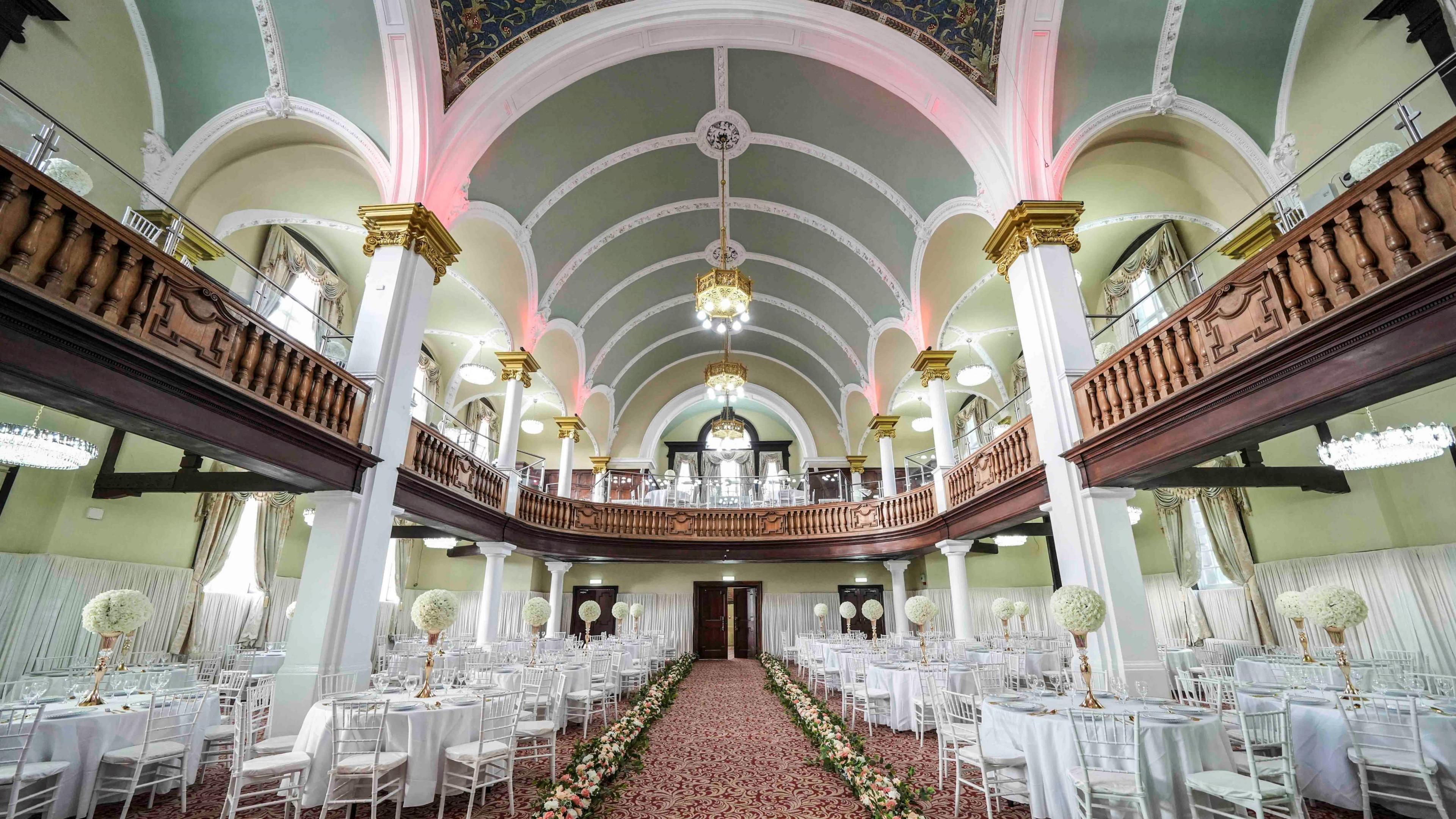
The main hall can accommodate up to 650 guests, with a smaller suite holding 170 people
The society's president Griff Rhys Jones had said of the former church in 2020: "To have such a wonderful building in such a state in the centre of Wolverhampton sends out a terrible message."
But its renovation was welcomed by Tim Bridges, the charity's West Midlands conservation adviser, who said it was "for many years a Grade II* listed building of great concern to the Victorian Society".
"But it is now well restored and visited by thousands of people each year for weddings and other celebrations."
Mr Dhinsa with his wife Kamaljeet and their sons Gurcharan and Gurvinder, spent a year and half working on the venue's transformation.
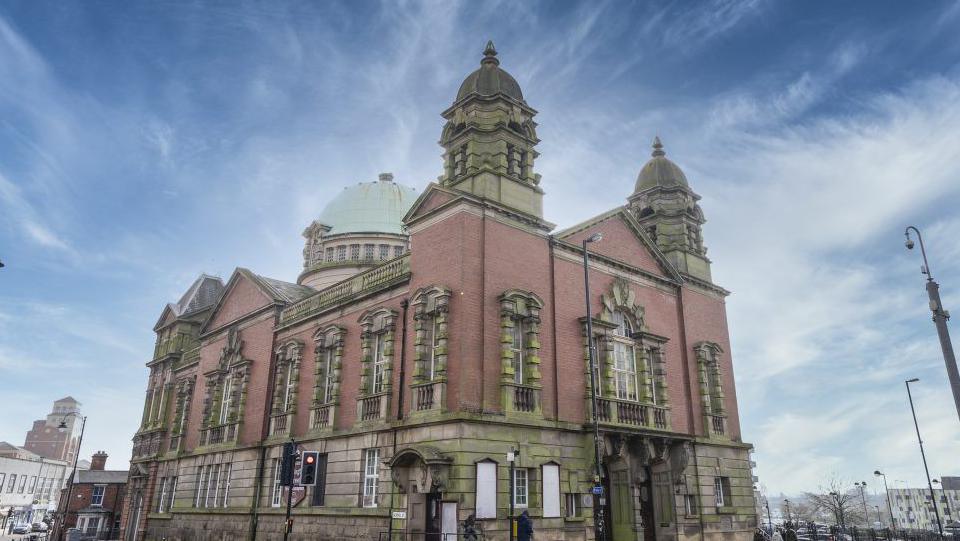
The building as been part of Wolverhampton city centre for more than 120 years
Designed by architect Arthur Marshall and built in 1900, it impressed visitors with its vaulted ceilings, ornamental plasterwork and balcony.
On the corner of Darlington Street and School Street, it held services for more than 120 years, but amid rising repair costs and falling worshipper numbers, it was reluctantly closed.
Mr Dhinsa, who is originally from the city's Whitmore Reans area, said it was on the market for three years when they took it on.
When he stepped inside, his love for the building was sparked.
"I said to my wife it's beautiful, it's an absolutely beautiful building," he said.
But it had fallen into disrepair, he explained, with leaking roofs, crumbling chimneys and severe damp.
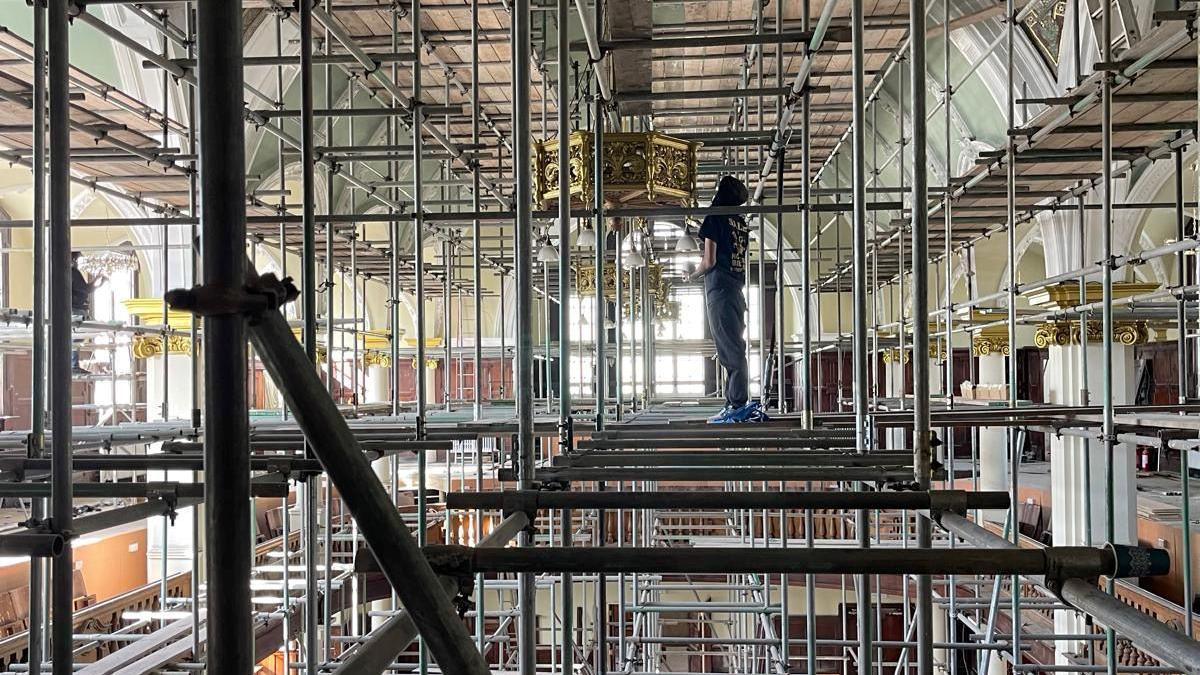
Scaffolding was put up to reach the high ceilings in the Victorian building

The former church had a leaking roof and cracks in its walls, the Victorian Society said.
The family wanted to return its former glory and invested their life savings, he said.
"It is one of a kind, with its vaulted ceilings, pillars and beautiful dome," Mr Dhinsa added.
"It is something very precious."
Their sons' skills from the building trade "made a big difference" to the long-running work, he said.
"It was a true family project."
The renovation included recreating intricate plaster moulds, putting up scaffolding to paint at 22 metres (72ft), installing bathrooms, new wiring and heating.
Mr Dhinsa added it involved "carefully restoring the building's vaulted ceilings, mosaic details, gold pillars and majestic dome".
Modern additions include an "infinity" dance floor, ceiling uplighters to showcase original architectural features and crystal chandeliers.

Kamaljeet and Rajinder Dhinsa were praised by Wolverhampton mayor Craig Collingswood who called the Grand Palace a "beautifully restored events venue"
"Our vision was to create an incredible space - one that would make people proud of Wolverhampton's heritage," he said.
"When guests step through our doors, we want them to experience a sense of awe and pride."
And in the summer of 2024, they were delighted to get a letter from Historic England to say it was no longer on its Heritage at Risk Register and had a viable future.
There was further praise from Wolverhampton mayor Craig Collingsworth, who praised the work and the couple as "visionary" on social media earlier this month.
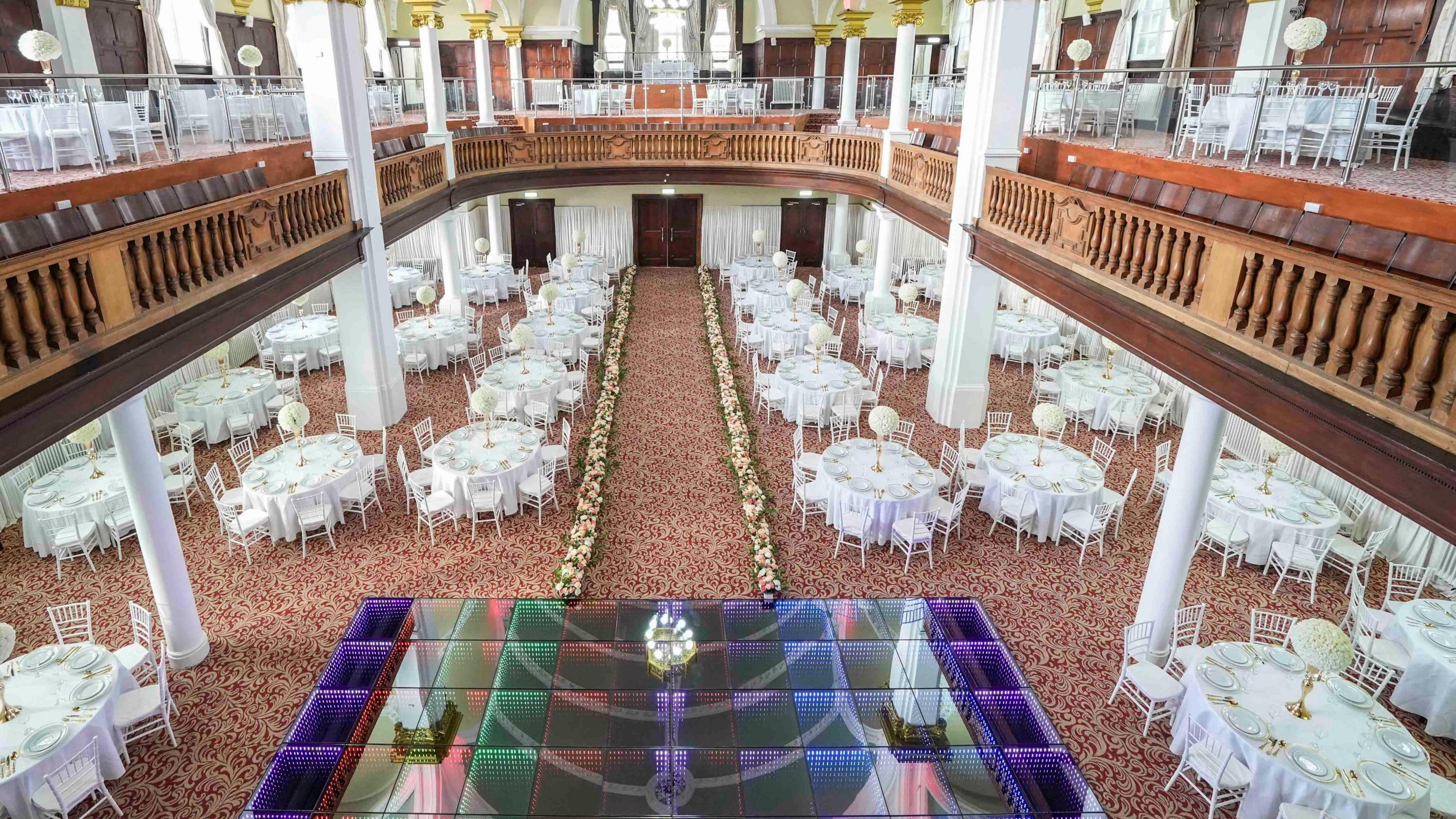
The lit up dance floor is now a central feature in the revamped building
The community is again using the venue, which hosted Wolverhampton's BID Excellence Awards in the summer.
It is taking part in the city's first Fringe Arts Wolves Festival from 28 November and is preparing a Christmas Masquerade Ball.
Mr Dhinsa added the family was also "passionate about giving back", adding the Grand Palace recently hosted a Cardiac Risk in the Young (CRY) screening, where 100 people aged 14 to 35 were tested for heart conditions.
Future plans include a blood donation session and organ donation awareness events.
"This building was once on the brink of being lost forever," Mr Dhinsa said. "Now it stands as a true symbol of transformation, heritage, and community spirit."
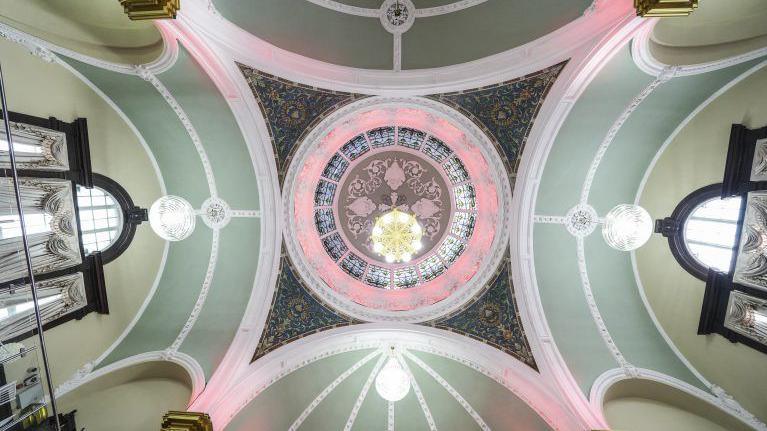
The project included painting intricate features on the Victorian ceiling
The Victorian Society said only about 5.8% of listed buildings were rated Grade II*, the star meaning such places as the Wolverhampton site were of particular importance.
It has asked people to nominate buildings in England and Wales for its 2026 list of those most at risk and hopes others can be given a new life, like the Grand Palace.
Mr Bridges added: "An outcome like this which brings hope of a sustainable future for a listed building is very rewarding for the society, and what we would like to see for so many Victorian and Edwardian buildings currently in poor condition."
Get in touch
Tell us which stories we should cover in Wolverhampton
Follow BBC Wolverhampton & Black Country on BBC Sounds, Facebook, external, X, external and Instagram, external.
Related topics
Related stories
- Published4 November
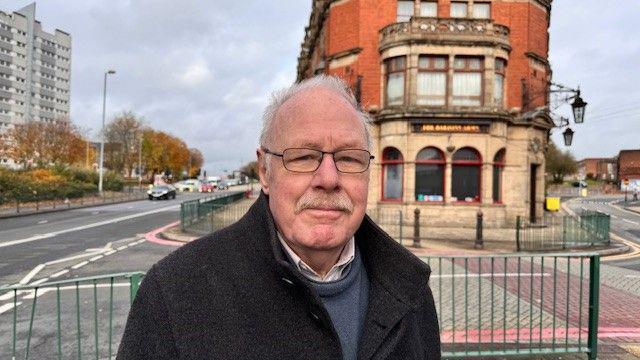
- Published5 October
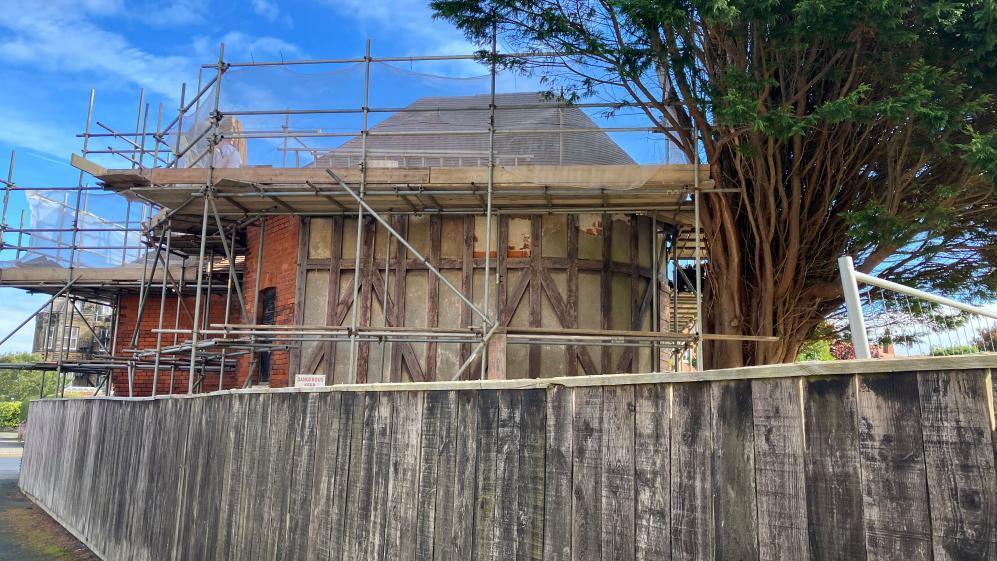
- Published2 March

- Published29 September 2019
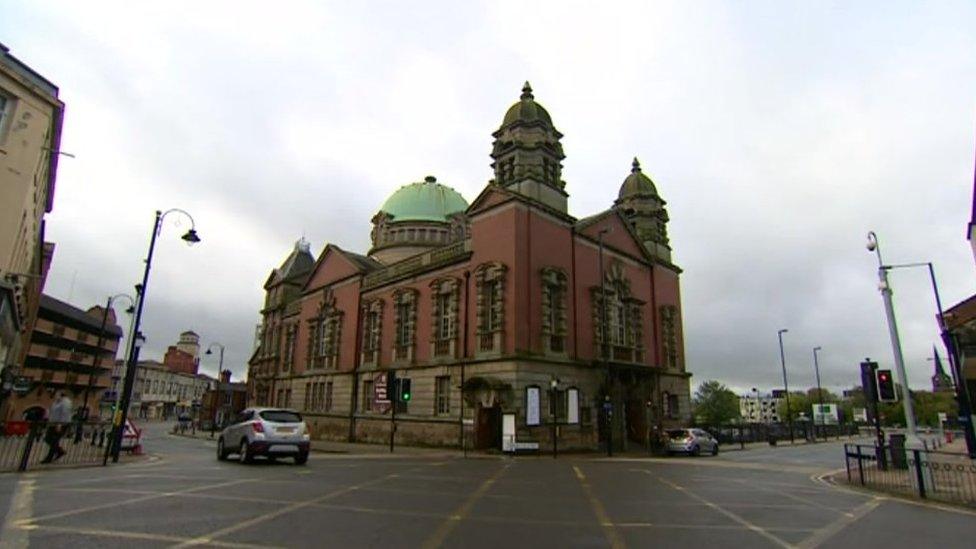
- Published30 September 2020
